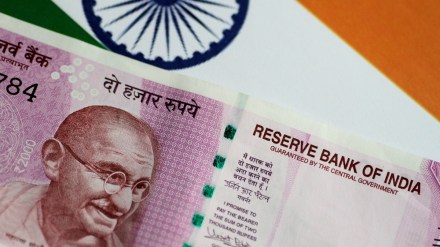The banking system liquidity deficit breached the Rs 3-trillion mark to hit a 14-year high, pushed by lower government spending, outflow towards tax payments and sluggish growth in deposits. According to the Reserve Bank of India (RBI), the liquidity deficit touched Rs 3.34 trillion on Tuesday from Rs 2.72 trillion on Monday.
“There is a lag effect in government spending versus its collections. The liquidity from government side comes into the market after a gap which causes fluctuations in liquidity. Month-end GST outflows have also added to the liquidity tightness,” Ajay Manglunia, managing director and head —investment grade group, JM Financial, told FE. He added that the RBI wants liquidity to remain tight to control inflation because tighter liquidity means higher rates and slower credit disbursement.
Tight liquidity has also impacted short-term money market rates, which have stayed above the repo rate. On Wednesday, the call rate was at 6.85% and the treasury bills repurchase, or TREPS, rate was at 6.78%, both well above the repo rate of 6.50%. Higher rates raise the cost of funds for banks as they mop up short-term funds from the money market.
The liquidity situation eased slightly in January after reaching new highs in December end. The liquidity deficit hit an 8-year high of Rs 2.68 trillion on December 28 due to advance tax payments and monthly GST payments. January brought some relief to cash-strapped banks as the deficit eased to Rs 1.1 trillion in the first week.
However, the relief proved to be short-lived as the deficit began to deepen from the second week of this month. “We think the RBI will keep liquidity in the deficit mode in the near term, but keep reducing the size of deficit steadily going forward,” said Parul Mittal Sinha, head of financial markets, India, Standard Chartered Bank. “We believe that easing liquidity conditions towards neutral would be interpreted as a precursor to rate cuts,” Sinha said.
The RBI has conducted several shorter-term repo auctions to infuse cash into the banking system over the past one month to infuse liquidity. All the variable rate repo (VRR) auctions conducted since mid-December received strong response from cash-starved banks. The VRR auction, conducted on January 12, received bids worth Rs 3.92 trillion from banks against the notified amount of Rs 1.75 trillion, reflecting the desperation of banks for cash.
“Sustained tightness in the banking system liquidity could prove to be onerous for borrowers, and will worsen in case if government spending does not accelerate in a meaningful way,” said Soumyajit Niyogi, Director, Core Analytical Group, India Ratings & Research. “Therefore, the infusion of durable liquidity is becoming necessary and idealistically, the monetary policy stance should change to ‘neutral’ from ‘withdrawal of accommodation’ to maintain consistency of stance and action,” he added.
Banking liquidity has been under stress for more than a quarter due to higher cash withdrawal led by the festival demand and a moderation in government spending, slower growth in deposits. Deposits have been growing slower than advances over the past one year. Banks credit offtake increased by 20% year on year (y-o-y) to reach Rs 159.6 trillion for the fortnight ending December 29 while deposits rose at 13.2% y-o-y for the fortnight to reach Rs 200.8 trillion as of December 29, 2023.
